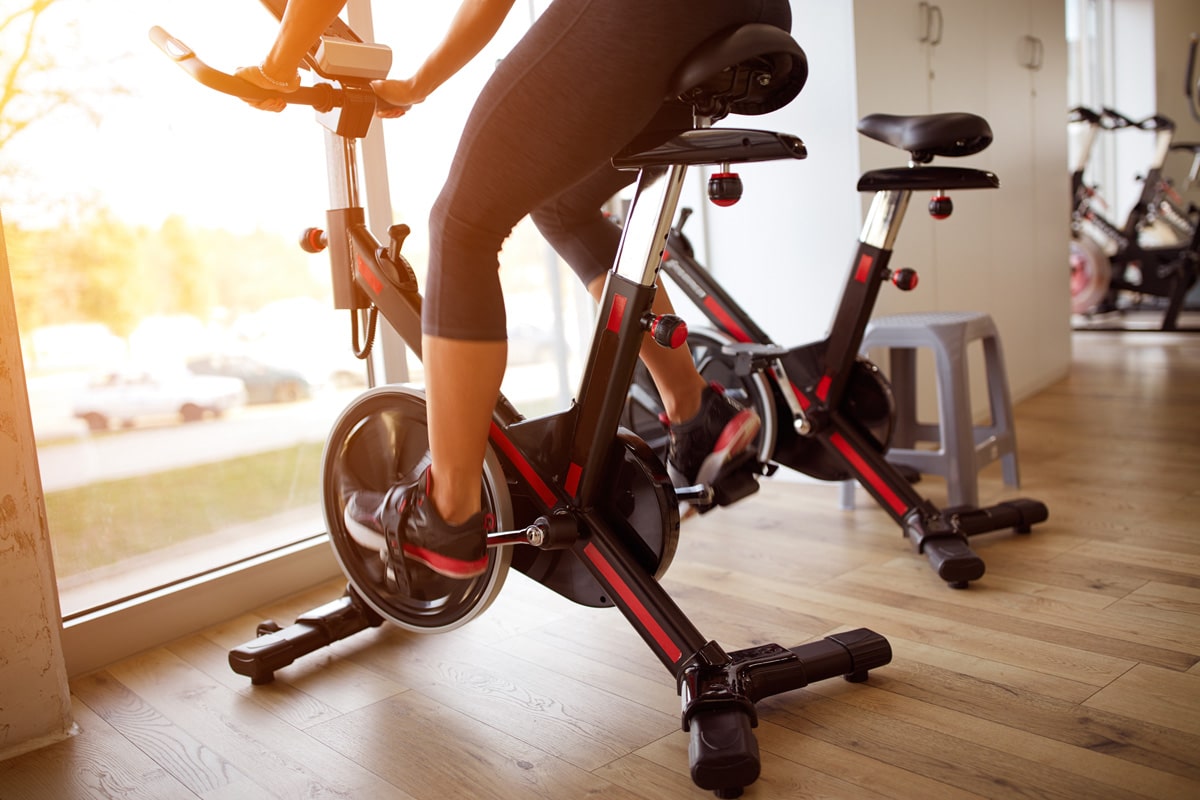In the realm of physical wellness, the significance of joint-friendly exercises is often understated. These workouts, primarily low-impact in nature, are instrumental in maintaining joint health, reducing the risk of injury, and enhancing overall mobility. Yet, many individuals are not fully aware of what constitutes a ‘joint-friendly’ exercise and how to incorporate these into their daily routines. This discussion aims to shed light on this subject, providing valuable insights that could be beneficial for those seeking to optimize their fitness regimen while prioritizing joint health.
Understanding Joint Health
In order to fully appreciate the significance of joint-friendly exercises, it is crucial to first delve into the intricate world of joint health and understand its pivotal role in our overall physical well-being. Joints function as the pivotal points of connection between our bones, facilitating movement and providing support. When joint health is compromised, the ensuing discomfort can severely hinder an individual’s mobility and quality of life.
A key aspect of maintaining robust joint health lies in the realm of joint nutrition. Consuming a balanced diet packed with nutrients such as omega-3 fatty acids, Vitamin D, and calcium can help bolster joint strength and flexibility. These nutrients contribute to the health of the cartilage, the flexible connective tissue that cushions the ends of bones at joints, thereby reducing the risk of wear-and-tear injuries.
Arthritis prevention, another crucial facet of joint health, involves the management of risk factors such as obesity and injury, as well as the adoption of joint-friendly behaviors. Regular low-impact exercise, for instance, can help to enhance joint flexibility and strength. By emphasizing joint nutrition and taking proactive steps towards arthritis prevention, we can pave the way for healthier, more resilient joints.
Importance of Low-Impact Exercises
The efficacy of low-impact exercises in promoting joint health cannot be overstated. These exercises, while gentle on the joints, offer tremendous benefits including improved cardiovascular health, enhanced flexibility, and pain reduction. From swimming to cycling, there is a myriad of low-impact exercises that individuals of all fitness levels can incorporate into their routines for optimal joint health.
Benefits of Low-Impact Exercises
Low-impact exercises, renowned for their ability to minimize stress on joints, offer a plethora of health benefits that are essential for maintaining overall wellness. One key benefit is their compatibility with a low-impact diet, promoting weight management and reducing the risk of chronic diseases. These exercises primarily target large muscle groups, improving cardiovascular and respiratory efficiency. They also enhance flexibility and balance, preventing falls and injuries. Additionally, low-impact exercises contribute to mental wellness. Regular participation can reduce anxiety and depression symptoms, bolster mood, and improve sleep quality. Overall, these exercises provide a sustainable way to maintain physical fitness and mental health while protecting the joints from excessive strain. Incorporating them into your routine can significantly enhance your quality of life.
Low-Impact Exercises Examples
Understanding the variety of low-impact exercises available is essential for selecting workouts that can effectively promote joint health while delivering all the aforementioned benefits. Elliptical training and rowing workouts are prominent examples of such exercises.
Elliptical training provides a full-body workout, engaging multiple muscle groups without placing undue stress on joints. This makes it an ideal choice for those seeking to maintain fitness levels while safeguarding joint health.
Rowing workouts, on the other hand, are both aerobic and strength-building, offering a comprehensive exercise regimen. The smooth, low-impact motion involved in rowing minimizes the risk of joint damage, making it a suitable option for individuals with joint sensitivities. The strategic integration of these workouts can thus facilitate an effective, joint-friendly exercise routine.
Walking: A Simple Start
As we transition to the subject of ‘Walking: A Simple Start’, it’s important to recognize the substantial benefits this fundamental form of exercise can provide, particularly for those seeking joint-friendly options. Not only does walking enhance overall cardiovascular fitness, but it also strengthens the bones, improves balance, and helps manage weight. Moreover, adopting correct walking techniques is crucial to maximize these benefits and prevent potential injuries.
Benefits of Walking
While many forms of exercise can impose harsh impacts on the joints, walking emerges as a remarkably beneficial and gentler alternative, providing a plethora of health advantages without the associated strain. The correct walking gear essentials, such as supportive shoes, can further enhance these benefits, reducing the risk of injury and ensuring optimal comfort. Additionally, walking is not just beneficial for physical health; it has a profound impact on mental health as well. Regular walks can help alleviate symptoms of depression, anxiety, and stress by triggering endorphin production — our body’s natural mood enhancers. Moreover, walking can also boost cognitive function and memory, making it a well-rounded, joint-friendly exercise that offers substantial benefits for both the body and mind.
Walking Techniques Explained
To initiate an effective walking routine, it’s imperative to master a few fundamental techniques that not only enhance the workout’s efficiency but also minimize the potential for injury. Proper footwear is crucial; it provides the necessary support and comfort, preventing foot and joint issues. Opt for shoes specially designed for walking, ensuring they fit well and are comfortable from the outset.
Importance of posture cannot be overstated. Maintaining an upright stance, engaging your core, and keeping your gaze forward can significantly enhance the efficacy of your exercise. Avoid locking your knees and remember to swing your arms naturally. A well-executed walking technique reduces strain on joints, making walking a truly joint-friendly exercise. Perfecting these techniques requires patience and consistency but the benefits are immeasurable.
Swimming and Water Aerobics
Engaging in swimming and water aerobics provides a low-impact, yet highly effective means of exercise that is gentle on the joints while offering a comprehensive workout for the whole body. The natural buoyancy of water reduces stress on the joints, making these activities ideal for those with arthritis or joint injuries.
Water resistance benefits include improved cardiovascular fitness, muscle strength, and flexibility. Unlike land-based exercises that can strain the joints, water’s resistance works against the body in all directions, resulting in balanced muscle development. This resistance, which can be increased by faster movements or use of equipment such as water weights or paddles, also boosts calorie burn.
Having the right swimming gear essentials enhances the effectiveness of your workout. A good quality swimsuit ensures comfort and freedom of movement. Goggles protect your eyes from chlorine and improve underwater visibility, while a swim cap can help reduce drag and keep hair dry. For water aerobics, foam dumbbells or webbed gloves can add intensity to your workout.
Incorporating swimming and water aerobics into your routine not only promotes joint health but also contributes to overall fitness and well-being.

Cycling: Indoor and Outdoor
Cycling, both indoor and outdoor, presents a plethora of joint-friendly benefits that can substantially contribute to an individual’s overall fitness and health. By comparing and contrasting these two forms of cycling, we can ascertain their unique advantages and determine which one might better align with an individual’s specific goals and needs. Therefore, our ensuing discussion will center on the advantages of cycling in general, while also exploring the nuanced differences between indoor and outdoor cycling.
Benefits of Cycling
Whether undertaken indoors or outdoors, cycling offers a plethora of benefits, acting as a potent, joint-friendly exercise that promotes overall fitness and wellbeing. With the right cycling gear essentials, such as a helmet, gloves, and padded shorts, cyclists can experience comfort and safety while amplifying the exercise’s effectiveness. Cycling is a low-impact activity that reduces strain and injuries associated with other forms of high-intensity workouts. It strengthens leg muscles and is excellent for mobility of hip and knee joints. Besides physical wellness, cycling also contributes to mental health improvements by reducing stress and anxiety levels. Moreover, outdoor cycling carries environmental benefits, producing zero pollution, reducing traffic congestion, and promoting a sustainable lifestyle. Hence, cycling is not only beneficial to individuals but also to the broader environment.
Indoor Vs Outdoor Cycling
When considering the merits of indoor and outdoor cycling, it becomes evident that each offers unique benefits, yet also carries its own set of challenges. Indoor cycling is convenient and can be customized to individual fitness levels. The controlled environment allows for focused attention on pedaling technique and the use of specific cycling gear such as heart rate monitors. On the other hand, outdoor cycling provides a more dynamic experience with varied terrains and natural elements, enhancing one’s balance and coordination. However, it requires more robust cycling gear and weather-appropriate attire. Both forms, when done correctly, can offer low-impact, joint-friendly workouts. Ultimately, the choice between indoor and outdoor cycling should be guided by personal preference, goals, and circumstances.
Yoga for Joint Flexibility
Incorporating yoga into your fitness regimen can significantly enhance joint flexibility, given its intricate positions that promote movement and stretch in various parts of the body. Understanding the yoga postures breakdown is vital for performing the poses correctly and reaping their full benefits.
Yoga is not just about physical wellness. There’s a profound link between yoga and mental health. The practice of yoga encourages mindfulness, reducing stress and anxiety levels, which in turn aids in maintaining better joint health. Chronic stress can lead to inflammation and stiffness in your joints, thus, a relaxed mind contributes to supple joints.
Here are three specific yoga postures beneficial for joint flexibility:
- The Child’s Pose (Balasana): This posture gently stretches your lower back, hips, thighs, knees and ankles.
- The Cat-Cow Pose (Marjaiasana-Bitilasana): This sequence is excellent for increasing flexibility and fluidity in your spine.
- The Downward-Facing Dog (Adho Mukha Svanasana): This pose stretches your entire body, with emphasis on your hamstrings and calves, also encouraging mobility in your shoulder joints.
Embrace yoga as part of your fitness regimen for optimal joint flexibility and mental wellness.
Pilates: Core Strength and Stability
Just as yoga enhances joint flexibility, Pilates focuses on building core strength and stability, both of which are crucial for overall body health and balance. Developed by Joseph Pilates in the early 20th century, this discipline combines controlled movements, strength training, and mindful breathing to improve posture, flexibility, and core stability.
A significant aspect of Pilates is equipment usage. It typically involves a range of specialized apparatus designed to provide resistance and support, such as the Reformer, Cadillac, and Wunda Chair. These machines help to intensify the workout, targeting different muscle groups and improving functional strength.
Instructor guided sessions are highly recommended in Pilates. A qualified instructor can ensure proper technique, alignment, and equipment usage, reducing the risk of injury and maximizing the benefits of each exercise. They can also adapt routines to individual needs and limitations, making Pilates an excellent choice for people with joint issues.
Tai Chi: Balance and Control
Transitioning from Pilates, another beneficial practice for joint health is Tai Chi, a Chinese martial art that emphasizes balance, coordination, and control. Originating from the rich Tai Chi history, this practice is often described as “meditation in motion”, combining slow, deliberate movements, deep breathing, and a calm mental state.
Various Tai Chi styles have evolved over centuries, each offering unique benefits. However, three primary aspects are common to all styles contributing to the balance and control that make Tai Chi particularly joint-friendly:
- Flowing Movements: Unlike other exercises that involve abrupt changes, Tai Chi promotes smooth transitions between movements. This reduces stress on joints and enhances overall control.
- Weight Shifting: Tai Chi involves a lot of shifting weight from one leg to another, which improves balance and strengthens lower body joints.
- Mind-Body Connection: The focus on deep breathing and mental imagery fosters a strong mind-body connection, promoting better control over movements and reducing the chance of injuries.

Strength Training: The Right Way
While Tai Chi provides joint-friendly benefits through balance and control, it is equally important to consider strength training, executed correctly, as an effective way to protect and improve joint health.
Strength training aims to fortify the muscles surrounding your joints, reducing the strain on the joints themselves. When done correctly, it can decrease joint pain, improve balance, and increase your range of motion. However, the correct execution and equipment selection are paramount to ensure safety and effectiveness.
Resistance Bands Usage is a key component in joint-friendly strength training. These versatile tools offer a smooth, continuous resistance that closely mimics the body’s natural movement, reducing strain on the joints. They are available in varying levels of resistance, allowing for progression as your strength improves.
Equipment selection should prioritize low-impact options. For instance, resistance bands, dumbbells, and weight machines can be used to perform joint-friendly strength training exercises. Always start with lighter weights or lower resistance, gradually increasing as your strength improves.
Stretching: Essential and Gentle
In the realm of joint-friendly exercises, stretching emerges as a gentle yet essential routine, playing a crucial role in maintaining flexibility and joint health. Regular stretching offers a myriad of benefits, including improving posture, reducing muscle tension, and enhancing overall physical performance.
When it comes to the topic of stretching benefits, prominent advantages include:
1. Flexibility Improvement: Regular stretching enhances joint mobility and flexibility, reducing the risk of injury during physical activity.
2. Muscle Tension Relief: Stretching helps in relaxing tight, tense muscles that often contribute to joint discomfort.
3. Posture Enhancement: By lengthening tight muscles that pull areas of the body away from their intended position, stretching can assist in correcting and maintaining good posture.
In addition, understanding the different stretching types is equally important for maximum benefit. Static stretching, dynamic stretching, and PNF (Proprioceptive Neuromuscular Facilitation) stretching are among the most practiced types. Each type has unique characteristics and is suitable for different stages of a workout or rehabilitation program.
Incorporating Exercise Into Daily Life
Building upon the foundation of regular stretching, incorporating exercise into daily life can further bolster joint health and overall physical well-being. The key to successful integration of fitness into everyday routine lies in Daily Exercise Motivation. This can be achieved by setting small, attainable goals, tracking progress, and celebrating milestones. For instance, aiming for a 10-minute walk during lunch break or choosing stairs over the elevator are simple yet effective steps towards a healthier lifestyle.
For those with desk jobs, Office Workout Tips can be invaluable. Transitioning to a standing desk, or incorporating chair yoga poses can help mitigate the impact of prolonged sitting on joint health. Additionally, using small exercise equipment such as resistance bands or hand weights can turn idle time into a productive workout session. Even basic movements like leg lifts, arm circles or stretching during short breaks can contribute to joint mobility and overall fitness.
Listening to Your Body: Signs and Symptoms
How can one discern the subtle signals our bodies send when our joints are under stress or potentially at risk? Pain recognition and injury prevention are crucial to maintaining joint health and ensuring the regular performance of joint-friendly exercises.
To better understand these subtle signals, consider the following three signs:
- Unusual discomfort or pain: This is often the first sign of joint stress. If an exercise causes discomfort beyond the typical ‘burn’ of exertion, it’s time to reassess your routine.
- Swelling or stiffness: These symptoms may indicate inflammation, a common response to joint stress or injury. Persistent swelling or stiffness should not be ignored.
- Decreased range of motion: Difficulty moving a joint through its full range of motion can signify joint stress or damage.
Frequently Asked Questions
What Are Some Effective Warm-Up Exercises to Do Before Starting a Joint-Friendly Workout?
Prior to beginning a workout, effective warm-up exercises include gentle cardiovascular activities such as brisk walking or cycling. Utilizing exercise equipment, ensure proper warm-up timing of at least 5-10 minutes for optimal results.
Can Certain Diets or Foods Help Improve Joint Health in Conjunction With Exercise?
Yes, certain diets can improve joint health. Foods rich in Omega 3 fatty acids have anti-inflammatory properties beneficial for joints. However, food allergies can impact joint health negatively, making a balanced, allergen-aware diet essential.
Are There Any Specific Exercises Recommended for People With Certain Joint Conditions Like Arthritis or Bursitis?
For individuals with joint conditions such as arthritis or bursitis, low-impact exercises are typically recommended. Consideration of appropriate exercise equipment selection and the impact of ageing on joints are key factors in developing an effective regimen.
How to Modify These Exercises for Individuals Who Have Joint Replacement Surgery?
Modifying exercises post joint replacement surgery involves taking certain precautions. Rehabilitative exercises, under professional supervision, can greatly benefit recovery. Gentle movements, avoiding high-impact activities, and gradually increasing intensity are key to safe and effective post-surgery exercise.
What Kind of Footwear Is Most Suitable for These Joint-Friendly Exercises?
Selecting sustainable footwear that provides proper support is key for optimal posture. Shoes with good cushioning and stability are beneficial, as they reduce undue stress, promote alignment, and contribute to overall comfort during physical activities.

